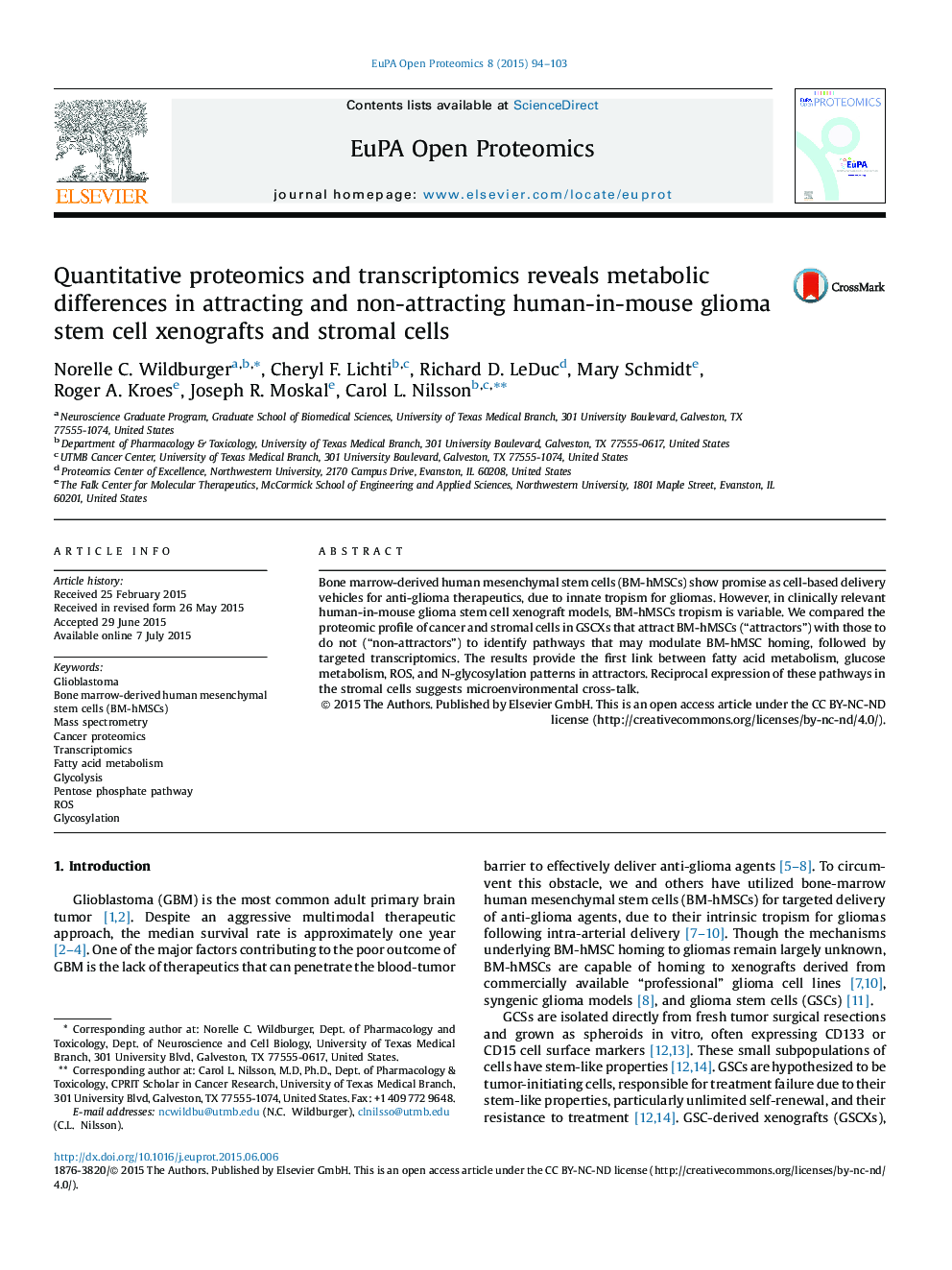| Article ID | Journal | Published Year | Pages | File Type |
|---|---|---|---|---|
| 1184445 | EuPA Open Proteomics | 2015 | 10 Pages |
•Compromised fatty acid metabolism reduces the inflammation-resolving lipid DHA.•Glucose-dependent pathways are compromised in BM-hMSC-attracting glioma xenografts.•Down-regulation of PPP in BM-hMSC-attracting glioma xenografts suggests increased ROS.•Glyco-transcriptomics suggest N-glycan signature associated with BM-hMSC-attracting glioma xenografts.•Stroma shows increased glucose metabolism in attracting xenografts.
Bone marrow-derived human mesenchymal stem cells (BM-hMSCs) show promise as cell-based delivery vehicles for anti-glioma therapeutics, due to innate tropism for gliomas. However, in clinically relevant human-in-mouse glioma stem cell xenograft models, BM-hMSCs tropism is variable. We compared the proteomic profile of cancer and stromal cells in GSCXs that attract BM-hMSCs (“attractors”) with those to do not (“non-attractors”) to identify pathways that may modulate BM-hMSC homing, followed by targeted transcriptomics. The results provide the first link between fatty acid metabolism, glucose metabolism, ROS, and N-glycosylation patterns in attractors. Reciprocal expression of these pathways in the stromal cells suggests microenvironmental cross-talk.
Graphical abstractFigure optionsDownload full-size imageDownload as PowerPoint slide
